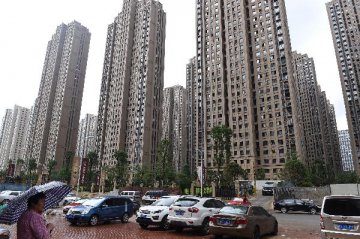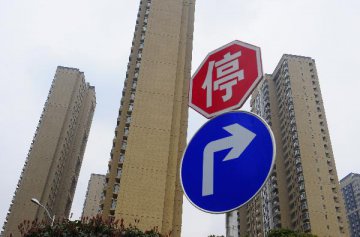
As an indicator of the property market, the land market in tier-1 cities saw significant changes in 2017.
The Ministry of Housing and Urban-Rural Development and the Ministry of Land and Resources (MLR) jointly released the Circular on the Administration and Control of Housing and Land Supply (hereafter referred to as the Circular) on April 6, which requires that cities with a de-stocking period of 12 to six months for commodity houses shall increase land supplies. Those with a period of less than six months shall speed up in increasing land supply significantly.
Based on the requirements of the Circular, tier-1 cities significantly sped up in land supply in previous months. With the introduction of new policies and the advancing of urban improvement, it is widely concerned about whether tier-1 cities will continue to increase land supply and what will be the changes in the land market in tier-1 cities.
The MLR released the Guidance on Improving the Land Quality of Cities (hereafter referred to as the Guideline) on September 6, which proposes to explore the transfer of the use right to construction land and encourages the proper development of underground space for industrial, storage and commercial programs.
It means that tier-1 cities will give equal importance to the development of current and new land under the background, indicated Yan Jinming, a professor of land management at Renmin University of China.
Land market cools down slightly
The land market in tier-1 cities maintains high levels.
Based on the statistics of China Index Academy (CIA), the total land supply in tier-1 cities reached 18.14 million square meters in the first eight months, accounting for more than 80 percent of 22.18 million square meters in 2016. 2.06 million square meters were supplied in August, representing a slight decrease of about 5 percent year on year.
As a matter of fact, it is a result that land supply slows down in tier-1 cities. CIA’s statistics show that 250 lots of land with 12.67 million square meters were supplied in tier-1 cities in the first half, representing an increase of 42 percent year on year. 230 lots of land with 11.35 million square meters were traded, representing an increase of 71 percent year on year.
Yang Hongxu, deputy director of the E-house China Research and Development Institute, indicated that the land supply in tier-1 cities will further speed up in the fourth quarter. Thanks to policies, it will see significant growth from the low supply of last year. Based on the requirements of the Circular, the land supply in tier-1 cities begins to speed up in the second half and it will maintain the trend in the fourth quarter.
Zhang Hongwei, an analyst with Tongce Realty Consultancy, holds the same opinion. He believes that due to corresponding restrictions, the land premium in hot cities plunged significantly from last year. Enterprises face less competition in buying lands and nore land supply has limited effects on the market.
It is noteworthy that while the total land supply increases, the land supply in tier-1 cities saw differences, the supply of residential land in particular. 3.59 million and 3.2 million square meters of residential land were supplied in Beijing and Shanghai in the first eight months. Guangzhou supplied 1.64 million square meters while Shenzhen saw no supply of residential land in 2017.
Yang believes that it is a result of land shortage in such cities. Besides, the property market in Shenzhen has been under consolidation since last March with less pressure on regulation and land supply. Guangzhou, which sees a booming property market since this year, will see more land supplies in the following months.
Tier-1 cities will see more land supply this year, indicated Zhang Dawei, chief analyst with Centaline Property. But the land supply will not reverse the imbalanced demand and supply and the subsequent effects will depend on the following regulatory policies.
Supply-side reform in land market
Compared with the significant increase in total land supply, the structural changes in the land market of tier-1 cities will catch more attention.
For residential lands, Beijing allowed enterprises to lease lands held by them in end 2016. Tier-1 cities have introduced various new houses with policy supports in the recent year. The nature of the land supplied also changed. The lands for residential houses for lease introduced in Shanghai were traded at half the original prices for commodity houses.
Meanwhile, Beijing, Shanghai and Guangzhou will conduct pilots on building houses for leasing with collective lands for construction. More collective lands for construction may be supplied without entering the land market. For Shenzhen with tight land resources, it will focus on the development of stock land.
Zhang Hongwei indicated that due to the population, limited land resources and other factors, tier-1 cities will maintain the trend with fewer land supply in the future. Besides, some cities began to supply lands for houses for leasing, the proportion of land supply for commodity houses will drop significantly in the future.
Yang believes that on the one hand, the decrease in land supply for commodity houses will result in few land supply for new commodity houses. On the other hand, more houses for leasing will reduce the demand for commodity houses. It will have slightly bearish effects on the prices of commodity houses in tier-1 cities in following years.
In terms of lands for operation, the supply-side reform is under progress. According to the Guideline introduced by the MLR on September 6, it proposes to explore the transfer of the use right to construction land and encourages the proper development of underground space for industrial, storage and commercial programs.
Zhang Dawei pointed out that due to the high development cost, the development of underground space has limited effects on the land market. For tier-1 cities with higher land cost, it can improve the utilization of land and increase the supply of land for operation to certain extent.
Yan believes that under the current background, tier-1 cities will give equal importance to the development of current and new land under the background. Shenzhen will focus on the development of current land. The introduction of various policies releases signs that the land supply in tier-1 cities, the land supply for residential houses in particular, will turn to solve the living right instead of the ownership. It will make breakthroughs in quantity and will have far-reaching effects on the whole property market. It is also an orientation for the establishment of a long-term mechanism in the property market.
Translated by Vanessa Chen
























Latest comments